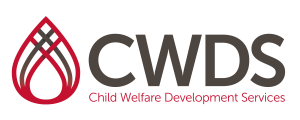CWDS Curriculum
Dealing with Families in Perpetual Crisis
Level: Advanced Practice – Lineworker
Credits: 6
Intended Audience: Experienced or newly hired child welfare services personnel working directly with clients or staff transitioning from one child welfare position toanother
Intended Objectives:
- Learn basics of resistance patterns and how to intervene more effectively with populations resistant to change.
- Increase knowledge of effective interventions to engage clients in completing case plan objectives.
- Understand the perpetual crisis addiction model and how to utilize basic motivational interviewing techniques to engage the families on their caseload more effectively.
Topics Include:
- Definition of Perpetual Crisis in Families
- Resistance Patterns
- Motivational Interviewing and how it applies to families in perpetual crisis
- Cultural and contextual considerations
- Case management strategies in working with families in perpetual crisis
CalSWEC Competencies Addressed:
1.3 Student demonstrates the ability to conduct an ethnically and culturally competent assessment of a child and family and to develop an effective intervention plan.
1.6 Student understands the influence and value of traditional, culturally based childrearing practices and uses this knowledge in working with families.
3.6 Integrating knowledge of individual, family, and cultural dynamics, the student can recognize signs and symptoms of substance abuse in children and adults and assess its impact.
3.8 Student demonstrates the ability to respectfully relate to, engage, and assess family members from a strengths-based “person in environment” perspective, and to develop and implement a case plan based on this assessment.
3.9 Student demonstrates the ability to engage and work with involuntary clients in a manner that includes the exercise of client self-determination.
3.13 Student demonstrates the ability and self awareness to assess his or her own value conflicts or emotional responses to clients, coworkers, and situations and seeks consultation when needed.
5.5 Student demonstrates understanding of how the strengths perspective and empowerment approaches can positively influence growth, development, and
behavior change.
Interventions, Services & Resources



